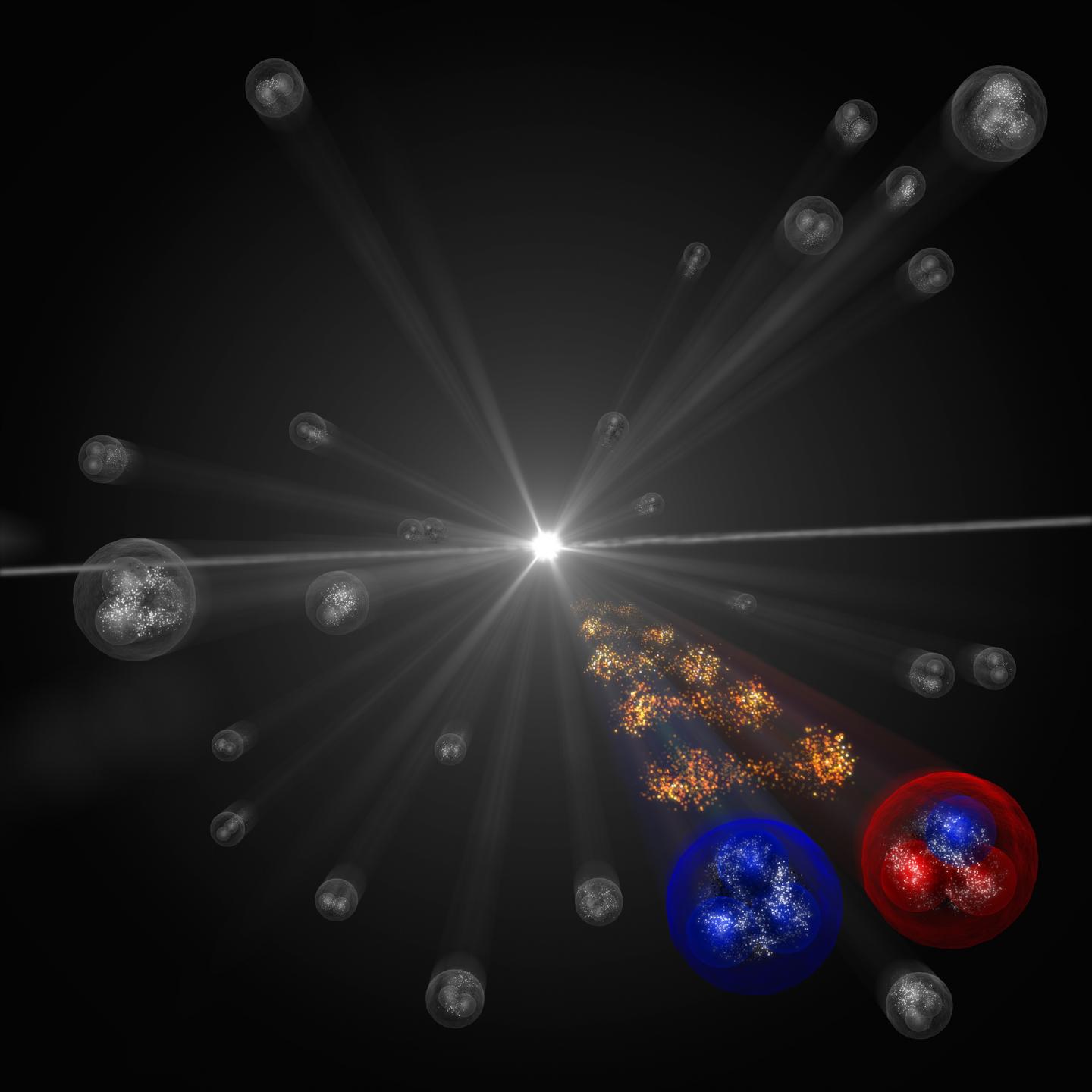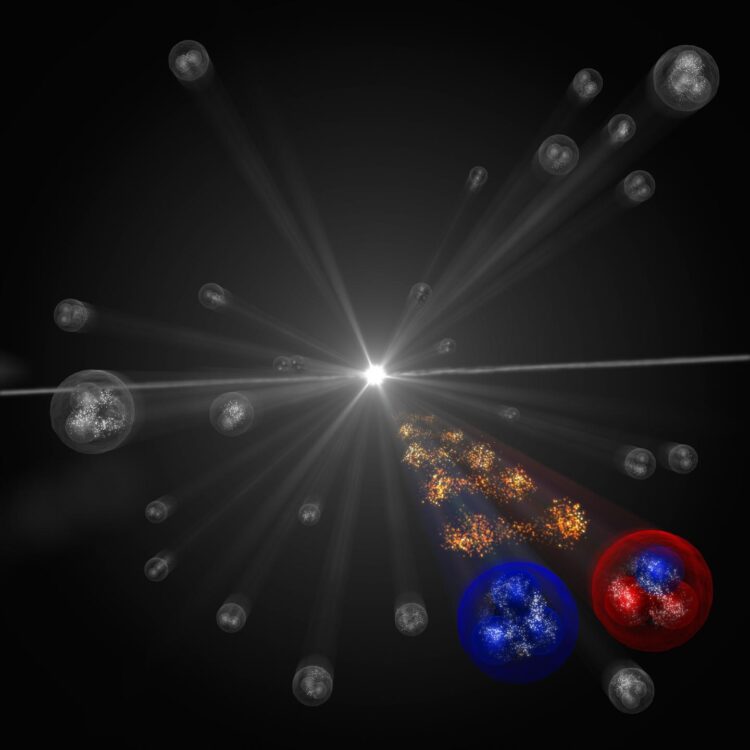High-precision measurements of the strong interaction between stable and unstable particles

Credit: Daniel Dominguez / CERN
The positively charged protons in atomic nuclei should actually repel each other, and yet even heavy nuclei with many protons and neutrons stick together. The so-called strong interaction is responsible for this. Prof. Laura Fabbietti and her research group at the Technical University of Munich (TUM) have now developed a method to precisely measure the strong interaction utilizing particle collisions in the ALICE experiment at CERN in Geneva.
The strong interaction is one of the four fundamental forces in physics. It is essentially responsible for the existence of atomic nuclei that consist of several protons and neutrons. Protons and neutrons are made up of smaller particles, the so-called quarks. And they too are held together by the strong interaction.
As part of the ALICE (A Large Ion Collider Experiment) project at CERN in Geneva, Prof. Laura Fabbietti and her research group at the Technical University of Munich have now developed a method to determine with high precision the forces that act between protons and hyperons, unstable particles comprising so-called strange quarks.
The measurements are not only groundbreaking in the field of nuclear physics, but also the key to understanding neutron stars, one of the most enigmatic and fascinating objects in our universe.
Comparison between theory and experiment
One of the biggest challenges in nuclear physics today is understanding the strong interaction between particles with different quark content from first principles, that is, starting from the strong interaction between the particles’ constituents, the quarks and the gluons, that convey the interaction force.
The theory of the strong interaction can be used to determine the strength of the interaction. However, these calculations do not provide reliable predictions for normal nucleons with up and down quarks, but for nucleons that contain heavy quarks, such as hyperons which contain one or more strange quarks.
Experiments to determine the strong interaction are extremely difficult because hyperons are unstable particles that are rapidly decaying after production. This difficulty has so far prevented a meaningful comparison between theory and experiment. The research method deployed by Prof. Laura Fabbietti now opens a door to high-precision studies of the dynamics of the strong force at the Large Hadron Collider (LHC).
Measurement of the strong force even for the rarest hyperon
Four years ago, Prof. Fabbietti, professor for Dense and Strange Hadronic Matter at TUM, proposed to employ a technique called femtoscopy to study the strong interaction at the ALICE experiment. The technique allows investigating spatial scales close to 1 femtometer (10^-15 meter) – about the size of a proton – and the spatial range of the strong-force action.
Meanwhile, Prof. Fabbietti’s group at TUM managed not only to analyse the experimental data for most of the hyperon-nucleon combinations, they also succeeded in measuring the strong interaction for the rarest of all hyperons, the Omega, consisting of three strange quarks. Furthermore, the group also developed their own framework that is able to produce theoretical predictions.
“My TUM group has opened a new avenue for nuclear physics at the LHC, one which involves all types of quarks, reaching an unexpected precision in a place nobody has looked so far,” says Prof. Fabbietti. The work published now in “nature” presents only some of the many interactions measured for the first time.
Do neutron stars contain hyperons?
Understanding the interaction between hyperons and nucleons is also extremely important for testing the hypothesis of whether neutron stars contain hyperons. The forces that exist between the particles have a direct influence on the size of a neutron star.
So far, the relationship between the mass and the radius of a neutron star is unknown. In the future, Prof. Fabbietti’s work will therefore also help to solve the riddle of the neutron stars.
###
Youtube-video about the experiment: https:/
The collaboration ALICE (A Large Ion Collider Experiment) counts more than 1000 scientists from over 100 physics institutes in 30 countries. The following German institutions are involved: University Bonn, University Frankfurt, GSI Helmholtzzentrum für Schwerionenforschung, University Heidelberg, University Münster, TUM, University Tübingen and Hochschule Worms. In Germany, ALICE receives funding from the BMBF and the GSI Helmholtzzentrum für Schwerionenforschung.
ALICE Collaboration: Unveiling the strong interaction among hadrons at the LHC
Nature, 9 December 2020 – DOI: 10.1038/s41586-020-3001-6
Media Contact
Dr. Andreas Battenberg
[email protected]
Original Source
https:/
Related Journal Article
http://dx.





